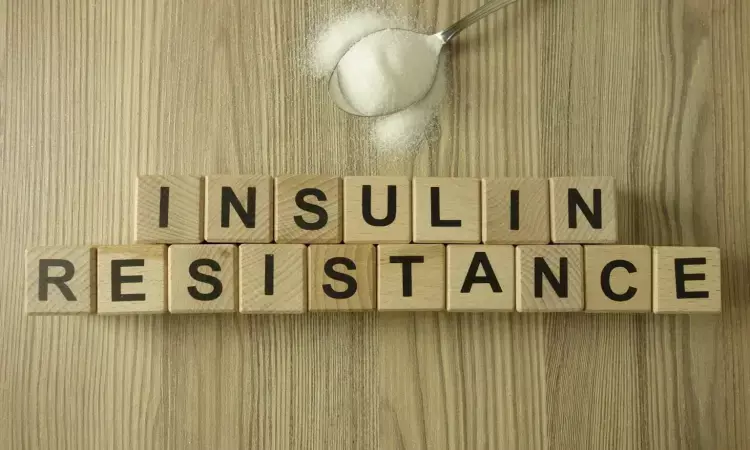- Home
- Medical news & Guidelines
- Anesthesiology
- Cardiology and CTVS
- Critical Care
- Dentistry
- Dermatology
- Diabetes and Endocrinology
- ENT
- Gastroenterology
- Medicine
- Nephrology
- Neurology
- Obstretics-Gynaecology
- Oncology
- Ophthalmology
- Orthopaedics
- Pediatrics-Neonatology
- Psychiatry
- Pulmonology
- Radiology
- Surgery
- Urology
- Laboratory Medicine
- Diet
- Nursing
- Paramedical
- Physiotherapy
- Health news
- Fact Check
- Bone Health Fact Check
- Brain Health Fact Check
- Cancer Related Fact Check
- Child Care Fact Check
- Dental and oral health fact check
- Diabetes and metabolic health fact check
- Diet and Nutrition Fact Check
- Eye and ENT Care Fact Check
- Fitness fact check
- Gut health fact check
- Heart health fact check
- Kidney health fact check
- Medical education fact check
- Men's health fact check
- Respiratory fact check
- Skin and hair care fact check
- Vaccine and Immunization fact check
- Women's health fact check
- AYUSH
- State News
- Andaman and Nicobar Islands
- Andhra Pradesh
- Arunachal Pradesh
- Assam
- Bihar
- Chandigarh
- Chattisgarh
- Dadra and Nagar Haveli
- Daman and Diu
- Delhi
- Goa
- Gujarat
- Haryana
- Himachal Pradesh
- Jammu & Kashmir
- Jharkhand
- Karnataka
- Kerala
- Ladakh
- Lakshadweep
- Madhya Pradesh
- Maharashtra
- Manipur
- Meghalaya
- Mizoram
- Nagaland
- Odisha
- Puducherry
- Punjab
- Rajasthan
- Sikkim
- Tamil Nadu
- Telangana
- Tripura
- Uttar Pradesh
- Uttrakhand
- West Bengal
- Medical Education
- Industry
Estimation of Insulin resistance may predict risk of first stroke in diabetes patients: Study

Sweden:Estimated glucose disposal rate (eGDR) is a validated clinical tool for estimating insulin sensitivity in type 1 diabetes.
Insulin resistance measured by estimated glucose disposal rate (eGDR) is related to an increased risk of stroke and death in patients with type 2 diabetes (T2D), finds a recent study. The relative importance of the predictors in the eGDR formula for stroke risk was found to be highest for hypertension followed by glycemia.
The findings of the study were presented at the annual meeting of the European Association for the Study of Diabetes (EASD) 2021.
Insulin resistance leads to the development of T2D and is a cardiovascular risk factor. A team of Swedish researchers led by A. Zabala aimed to investigate the potential association between insulin resistance measured by estimated glucose disposal rate and risk of first stroke and death in people with T2D.
For this purpose, the researchers designed a nationwide population based observational cohort study that included all T2D patients from the Swedish national diabetes registry. It contained full data on eGDR which was calculated by the formula (based upon the euglycemic hyperinsulinemic clamp technique): eGDR (mg/kg/min) = 21.158 - (0.09 * WC) - (3.407 * HT) - (0.551 * HbA1c) [WC = waist circumference (cm), HT = hypertension (yes=1/no=0), and HbA1c = HbA1c (DCCT %)].
eGDR was categorized as following: <4 (highest grade of insulin resistance), 4-5.99, 6-7.99, and ≥8 mg/kg/min). The association between the risk of stroke and death and the eGDR categories were assessed in which the lowest category served as a reference.
The relative importance of each factor in the eGDR formula was measured by the R2 (±SE) values by calculating the explainable log-likelyhood that was attributable to each risk factor.
A total of 104 697 T2D patients (woman 44.5%) with a mean age of 63 years was included in this study and were followed for a median of 5.6 years, during which 4201 strokes occurred (4.0%).
Key findings include:
- Crude survival curves for freedom of stroke are shown in the figure.
- After multivariate adjustment the HR for stroke in patients with eGDR categories between 4 to 5.99, 6 to 7.99 and >8 were: 0.77, 0.68 and 0.60, compared to the reference, i.e. eGDR <4).
- The corresponding numbers for risk of death were: 0.83, 0.77 and 0.72.
- The estimated explained relative risk (R2) for each factor in the eGDR formula was for the risk of stroke: hypertension (0.045±0.0024), HbA1c (0.013±0.0014), and waist (0.006±0.0009), respectively.
"Insulin resistance, measured as eGDR, is associated with an increased risk of stroke and death in people with T2D," wrote the authors. "The relative importance of the predictors in the eGDR formula for the risk of stroke was highest for hypertension followed by glycemia."
Reference:
Insulin resistance and risk of first stroke in type 2 diabetes: a nationwide cohort study was presented at the EASD 57th Annual Meeting 2021.
Dr Kamal Kant Kohli-MBBS, DTCD- a chest specialist with more than 30 years of practice and a flair for writing clinical articles, Dr Kamal Kant Kohli joined Medical Dialogues as a Chief Editor of Medical News. Besides writing articles, as an editor, he proofreads and verifies all the medical content published on Medical Dialogues including those coming from journals, studies,medical conferences,guidelines etc. Email: drkohli@medicaldialogues.in. Contact no. 011-43720751


